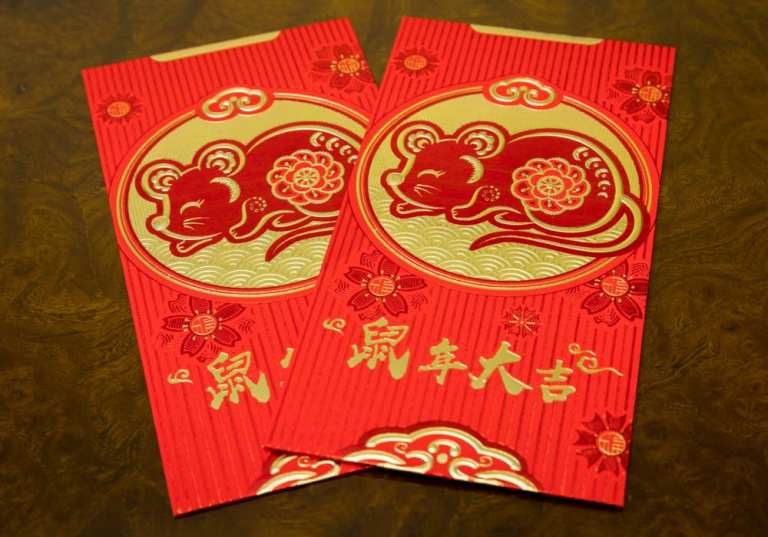The specifics of the celebration vary in terms of length and activities undertaken, but gathering with friends and family, eating large meals, and exchanging gifts and money tend to be common across all celebrations. The Lunar New Year in China sees the largest celebration of the holiday on earth — and among the longest, stretching 16 days end to end. In 2020, it is estimated that Chinese citizens will make roughly 3 billion trips over the course of the holiday period to see family and friends or simply travel, with more than 7 million expected to visit destinations abroad.
Brands have responded avidly. Since late-September, retailers all over the world have been rolling out campaigns and seasonal merchandise, aimed at capturing the $150 billion-plus in consumer spend up for grabs in 2020. Leading the pack have been luxury brands — given that, as of early 2020, Chinese shoppers accounted for 35 percent of global luxury goods sales, and 90 percent of last year’s growth in the market, according to data from Bain & Co.
In 2019, that was something of a challenge for luxury brands, since 2020 in the Chinese Zodiac is the year of the rat — not an animal generally associated with luxury, particularly in a country where plague carried by rats is still an ongoing health concern. However, different brands have thought their way through and around this challenge in a variety of ways.
For example, it’s been a big year for Mickey (and Minnie) Mouse in China, as the Chinese word for “rat” can also be interpreted as “mouse” — with brands like Gucci and Miu Miu having stamped Disney’s signature rodent across an entire host of New Year’s-related merchandise. Other brands like Givenchy, Fendi, Dior, CELINE and Diane von Furstenberg either elected to make the rat highly conceptual and difficult to recognize as such or dispensed with the rat entirely.
Luxury brands have long been on the Lunar New Year bandwagon, as China’s emerging upper class rapidly became a massive share of the global luxury goods market over the last decade or so. However, the more interesting trend over recent years is the degree to which mass market brands have embraced the Lunar New Year as the follow-up commerce season to the Western holidays.
Advertisement: Scroll to Continue
“There’s this flattening of the world taking place in regards to marketing trends and themes,” Deb Gabor, a brands expert and CEO of Sol Marketing, told Vox. “It mostly started with the luxury brands, but we’re seeing more and more mainstream brands doing this,” like Sephora and online beauty companies.
Indeed, the two most frequently watched, commented on and praised advertisements from Western brands during the run-up to the 2020 Chinese New Year were by Nike and Apple. Nike’s advertisement told a funny story about the red envelope tradition in China for New Year’s, and the counter-tradition of politely declining the envelopes full of cash before accepting them. The Apple advertisement told a touching story (shot on an iPhone X) about missing home, and the power of produce to bring people together.
The question going into 2020 and beyond about eCommerce is whether foreign brands will see their big investments in the holiday pay off, since recent data indicates that Chinese consumers are developing a stronger preference for domestic merchants since the start of trade disputes between China and the U.S. For instance, as of early October 2019, 78 percent of Chinese consumers reported that, going forward, their intention is to avoid buying American brands in favor of similar domestic goods if possible. How that preference will play out, and whether the extensive efforts by global brands to cater directly to Chinese consumers during the New Year period succeed, remains to be seen.
In addition, an ongoing question is the impact, if any, of continuing efforts to contain the coronavirus that originated in China’s Wuhan region, as the biggest holiday season in China and much of Asia gets off the ground. Early this week, luxury stocks took a $15 billion cut, resulting from investor concerns regarding the rapid spread of the disease within China and outside its borders, and the possible deleterious effect on travel and spending during the busy, travel-intensive time of year.
To date, Chinese officials have extended quarantines in three cities within Wuhan, and cancelled some public New Year’s celebrations within them, but have otherwise let the flow of travel go unabated apart from some health screening at airports. Screenings of flights into and from China are also receiving scrutiny in global airports, particularly in the U.S., Australia and Japan.
Luxury markets began to recover in the latter half of the week, as investors seemed to settle into a wait-and-see posture in terms of how the emerging health risk will affect the immediate holiday shopping season — and beyond — in China.
“For now, we are keeping our economic forecasts for this year unchanged, but the spread of the virus is clearly a major downside risk, and we will continue to monitor the situation closely,” wrote Capital Economics Senior Economist Gareth Leather, according to CNBC. “If the virus does spread, the worst affected countries are likely to be those most dependent on Chinese tourist spending. In addition to China itself, Hong Kong stands as the most exposed. Thailand and Vietnam are also vulnerable.”
While there currently remains some unknowns floating through the air in China, nearly 1 billion people will start the annual exchange of gifts, money, food and fun. For the increasing army of brands looking to cash in on the New Year opportunity, that means the rubber has officially hit the road in terms of whether their outreach efforts worked, and if they will catch their share of the $150 billion-plus commerce explosion over the next two weeks.




